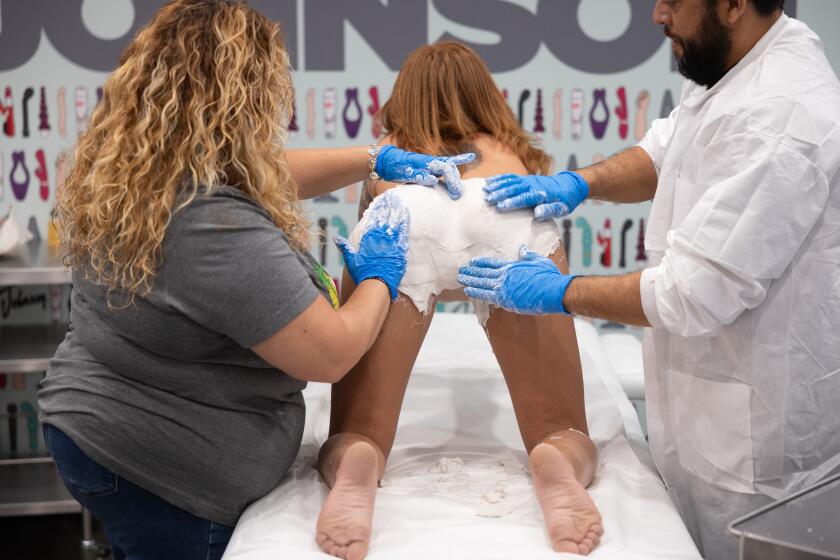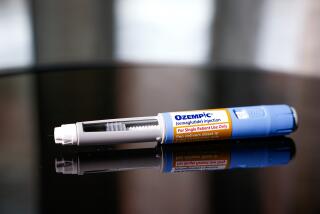(Photos courtesy of Jeniffer Brown; Los Angeles Times animation)
- Share via
Jeniffer Brown wanted the Ozempic body. She just didn’t want “Ozempic face.”
She got both, dropping 20 pounds in the first four months after she started taking the blockbuster injectable drug, which is intended to treat diabetes but has become better known for triggering dramatic weight loss fast.
By last May, Brown was down 40 pounds in a year without changing her diet or exercise routine. She had reached her goal weight of 125 pounds and was no longer prediabetic, but the swift and substantial reduction in fat left her with looser skin, more pronounced wrinkles and sunken cheeks — side effects that have been dubbed Ozempic face, although other parts of the body are also susceptible.
“My breasts definitely got saggier, but it was more the pockets for my implants got too big at that point and my implant was flipping. That breast fat was gone,” Brown, 47, said. “My face has been what I’ve spent the most time on. It’s like a melted candle.”
To restore volume and soften facial creases, she began getting dermal fillers in her cheeks, jowls and jawline. In September, she returned to her plastic surgeon for an arm lift to reshape her upper arms and a breast lift that also secured the shifting implants.
(Photos courtesy of Jeniffer Brown; Los Angeles Times animation)
“It is a dream weight until you spend $25,000 on plastic surgery, and you go every three months to your injector because you’ve got to just continuously pump Sculptra and fillers trying to keep that skin on your skull,” said Brown, a hairstylist from Owensboro, Ky.
Approved by the FDA in 2017, Ozempic skyrocketed two years ago as word spread about its “miracle” weight-loss capabilities. Doctors began freely prescribing the Type 2 diabetes medication off label, causing a global shortage for the pricey drug, which costs about $900 a month without insurance.
Subscribers get early access to this story
We’re offering L.A. Times subscribers first access to our best journalism. Thank you for your support.
Now many say they have become thin in the waist but old in the face. The initial doctor’s visit for an Ozempic prescription is, months later, being bookended by a trip to the plastic surgeon, forging a budding relationship between the medications and the fast-growing $58-billion cosmetic surgery market.
“A patient day doesn’t go by without dealing with somebody who says, ‘My face has changed, I’ve been on this drug and I want to do something about it,’” said Dr. Alan Matarasso, a plastic surgeon in Manhattan. “We’ll see it not only on the face, but in the breasts, in the abdomen, in the thighs. What Ozempic has done is it’s opened up a whole new class of people who are considering the benefits of plastic surgery.”
Injectable alternatives including Wegovy, Mounjaro and Zepbound have also seen sales soar, and new versions — including in pill form — are in the works, marking what medical specialists are calling a revolution in anti-obesity treatment.
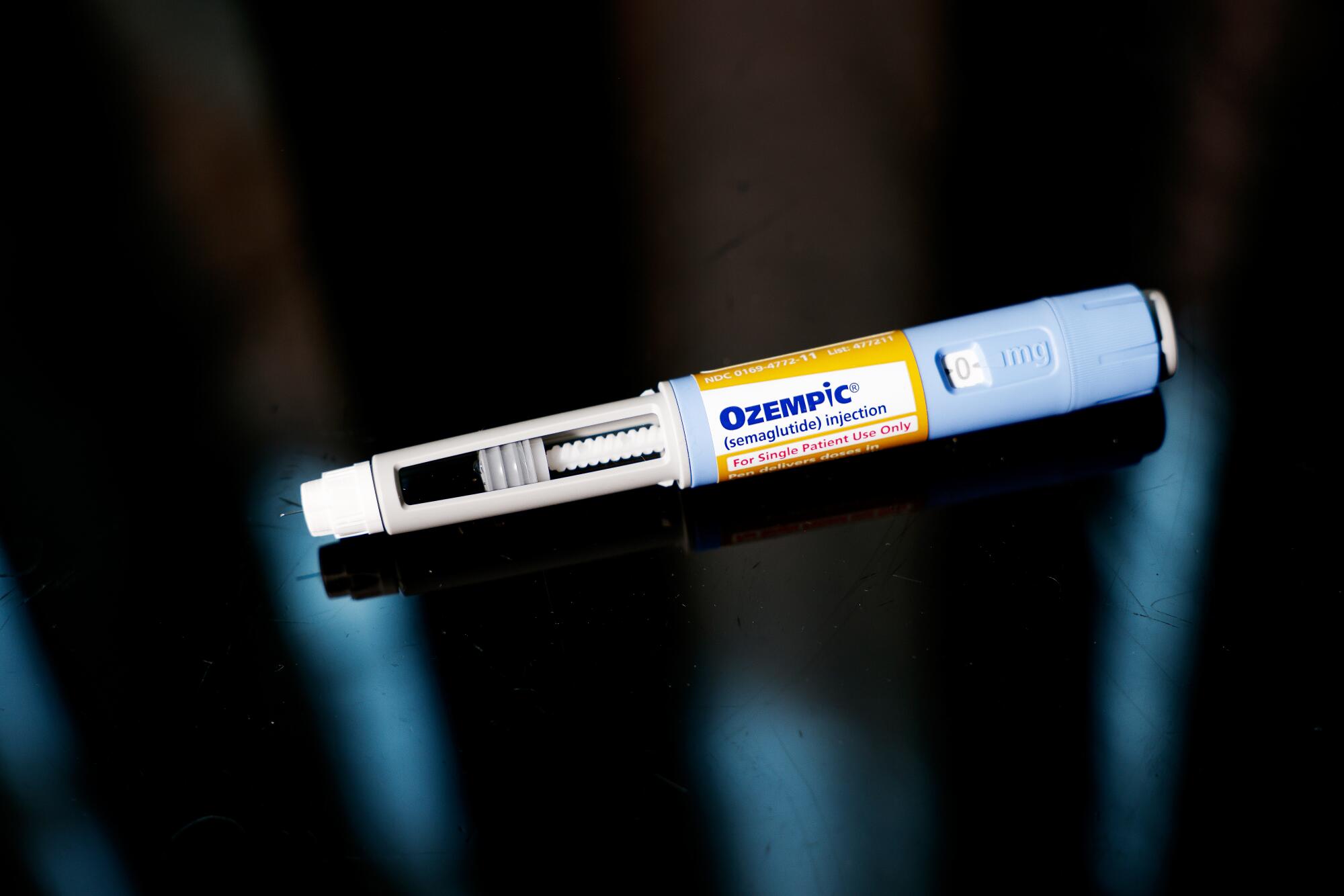
Patients say the drugs, which reduce appetite and slow the rate of digestion, have been a game-changer after years of trying to lose weight on their own and seeing little to no movement on the scales. But the speedy results are also creating problems.
“If you lose weight slowly, many times our skin can shrink and contract with it,” said Dr. John Diaz, a plastic surgeon in Beverly Hills, who noted that fat is actually desirable in the face because it makes people look youthful. “With rapid weight loss, the volume quickly deflates and the skin has no time to catch up.”
Diaz, who performs facial, breast and body procedures, estimated that half of his patients are on Ozempic or an alternative. For those wanting a “full comprehensive facial rejuvenation” — a face, brow and neck lift with extras such as eyelid surgery and fat grafting (in which fat is transferred from one area of the body to another) — the out-the-door cost could top $100,000, he said.
“The patient who is more likely to take Ozempic is someone who is concerned about their weight, and that very same person is the person who is very concerned about their appearance and is more likely to seek a plastic surgeon,” he said.
Ozempic’s astounding ascent can be traced to Hollywood, where several stars have seemingly shrunk overnight. Oprah Winfrey, Elon Musk, Amy Schumer and Sharon Osbourne (who recently said Ozempic got her under 100 pounds and left her “too gaunt”) are among the celebrities who have copped to using one of the buzzy injectable drugs, which in clinical trials helped users lose about 15% of their body weight or more.
There’s a lot of shaming if someone wants to lose 10 or 15 pounds and they can’t. If you’re doing everything and your body’s not budging, which is where I was, this was a solution for me.
— A Mounjaro patient who used the Type 2 diabetes drug last year to lose weight
Their adoption has become so widespread that the country’s two main plastic surgery associations — the American Society of Plastic Surgeons and the Aesthetic Society — are now monitoring their emerging effect on the industry.
In its most recent annual report, the American Society of Plastic Surgeons highlighted a “noteworthy 8% growth in face lift procedures” from 2019 to 2022.
Patients weren’t asked why they got work done, but the group theorized that weight-management drugs could be one factor, noting a “phenomenon colloquially termed ‘Ozempic Face,’ where the face exhibits more pronounced signs of aging due to rapid and significant weight loss.” (It also said the increase could be partly due to remote employees feeling self-conscious from using video conferencing platforms during the pandemic.)
Sign up for This Evening's Big Stories
Catch up on the day with the 7 biggest L.A. Times stories in your inbox every weekday evening.
You may occasionally receive promotional content from the Los Angeles Times.
In a follow-up article in November, the society said that because of the injectable drugs, the well-established link between “weight loss and body contouring is becoming ever more connected.” (The long history between the two includes liposuction to suck out fat deposits; excess skin removal after bariatric surgery; and CoolSculpting to freeze targeted pockets of fat.)
“The future of plastic surgery is transforming before our eyes,” the article said. “As the demand for medications like Ozempic grows, so does the need for board-certified plastic surgeons who can refine and perfect the weight-loss journey that begins, increasingly, with a prescription.”
Those prescriptions are now easy to obtain from family doctors, sleek med spas, online weight-loss programs and plastic surgeons, propelling the drugmakers to stunning sales.
A patient day doesn’t go by without dealing with somebody who says, “My face has changed, I’ve been on this drug and I want to do something about it.”
— Dr. Alan Matarasso, a plastic surgeon in Manhattan
Last month Novo Nordisk, the Danish pharmaceutical giant behind Ozempic and anti-obesity drug Wegovy, reported that its 2023 revenue surged 36% in constant-currency terms compared with the year before. Its market cap of roughly $550 billion is up from around $257 billion at the end of 2021.
The popularity of the injectable drugs has sparked intense discussions about the controversial measures people will take to look a certain way, especially as dieters who fall within healthy weight ranges seek out the medications.
“We’re seeing almost designer Ozempic — ‘I need to lose my last 10 or 20 pounds,’ as opposed to somebody that is what we call morbidly obese,” Matarasso said.
Critics say the stunning demand has exposed the cracks in the body-positivity movement, showing that beauty standards are still extremely high — and probably rising — thanks to Instagram and TikTok, anti-aging filters, selfie culture and relentless celebrity and influencer self-promotion on social media. They worry that the weight-loss drugs will perpetuate a cycle of costly medical procedures that people don’t need and only a rarefied subset can afford.
Family-run Doc Johnson has been making pleasure products in North Hollywood since 1976 and is the country’s largest sex toy manufacturer.
“We live in Los Angeles — everyone looks good, and there is a lot of pressure about being thin and fit,” said a medical aesthetician who began taking Mounjaro, another Type 2 diabetes drug, last summer when she weighed 130 pounds. “There’s a lot of shaming if someone wants to lose 10 or 15 pounds and they can’t. If you’re doing everything and your body’s not budging, which is where I was, this was a solution for me.”
The 5-foot-5-inch woman, who declined to provide her name so she could speak openly about her weight loss and cosmetic surgery, spent $2,200 on Mounjaro over four months and got down to 115 pounds.
She said the drug — which regulates blood sugar levels through a weekly injection in the stomach, thighs or upper arms — helped her curb her alcohol cravings and better control her portion sizes without any of the nausea and other gastrointestinal issues that the medications are known to cause.
“I was never overweight, but I wanted to get back to where I was and this allowed me to do it very easily,” she said, although she wasn’t 100% satisfied. “I was like, ‘OK, I like how my body looks, but my neck and my face, I don’t like.’”
In November, she paid $30,000 for a lower face lift and neck lift with Dr. Suzanne Trott in Beverly Hills to fix her drooping skin; many of her girlfriends, she said, have done the same after losing moderate amounts of weight on the drugs. It has become such a common post-weight-loss combination that Trott now refers to it as the “skinny lift.”
1
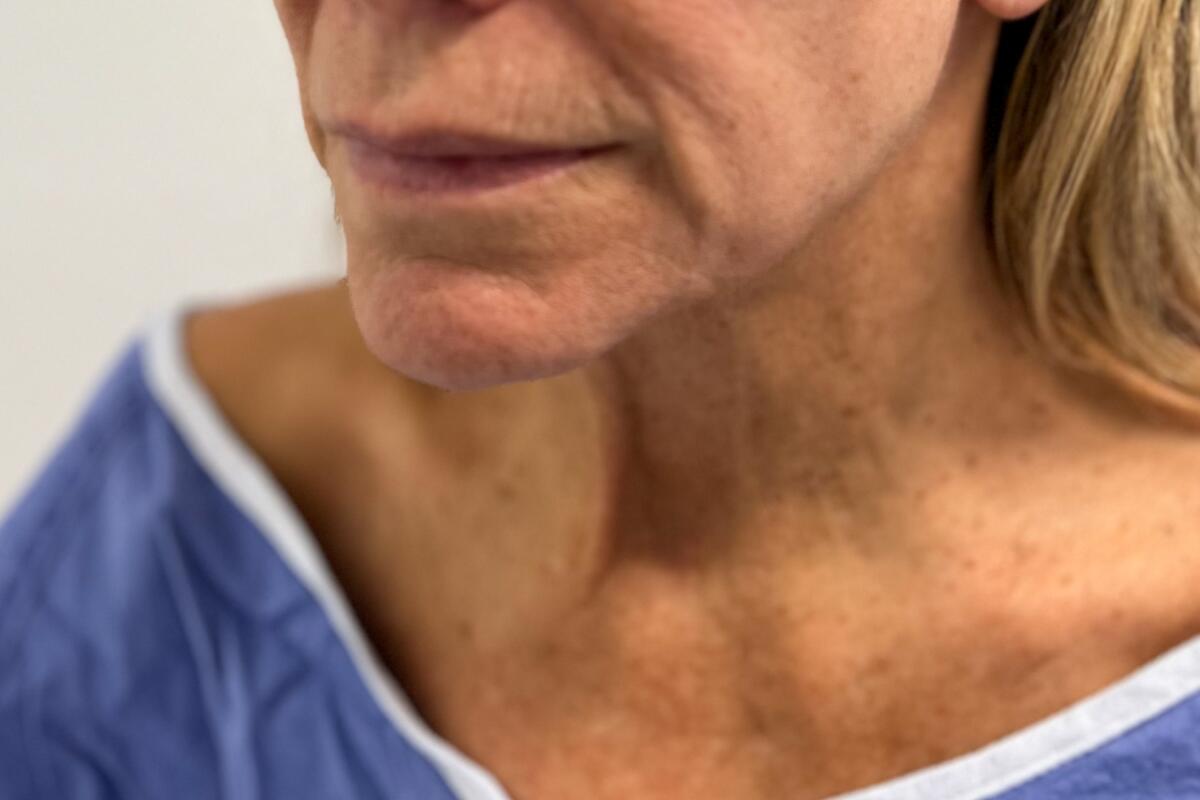
2

1. One of Dr. Suzanne Trott’s cosmetic surgery patients before her lower face lift and chin lift in November. 2. The $30,000 procedure fixed the drooping skin that the woman, a 57-year-old medical aesthetician, was left with after using Mounjaro to lose weight. (Suzanne Trott)
“If you saw me, you would never guess that I was 57,” the patient said after her surgery. “I look like I’m in my 40s. So yeah, it was worth it.”
Other patients are using semaglutide, the active ingredient in Ozempic and Wegovy, to slim down ahead of planned tummy tucks and other tightening procedures, said Dr. Kelly Killeen, a Beverly Hills plastic surgeon.
“Because a tummy tuck looks great,” she said, “but a tummy tuck on a patient who has also lost 20 pounds may be even greater.”
“I’ve had patients put their surgeries off — they were scheduled with me for surgery and were a totally normal, healthy weight. And then they were like, ‘You know what, I’m on Ozempic now — let’s see how much weight I can lose,’” she continued.
In 2018, a patient named Jennifer came in for a consultation with Killeen hoping to get rid of the “wrinkly stomach pouch” left over from having twins a decade earlier and to repair a hernia. At 200 pounds and 5 feet, 4 inches, she was encouraged to get down to 170 before undergoing the procedure for optimal results.
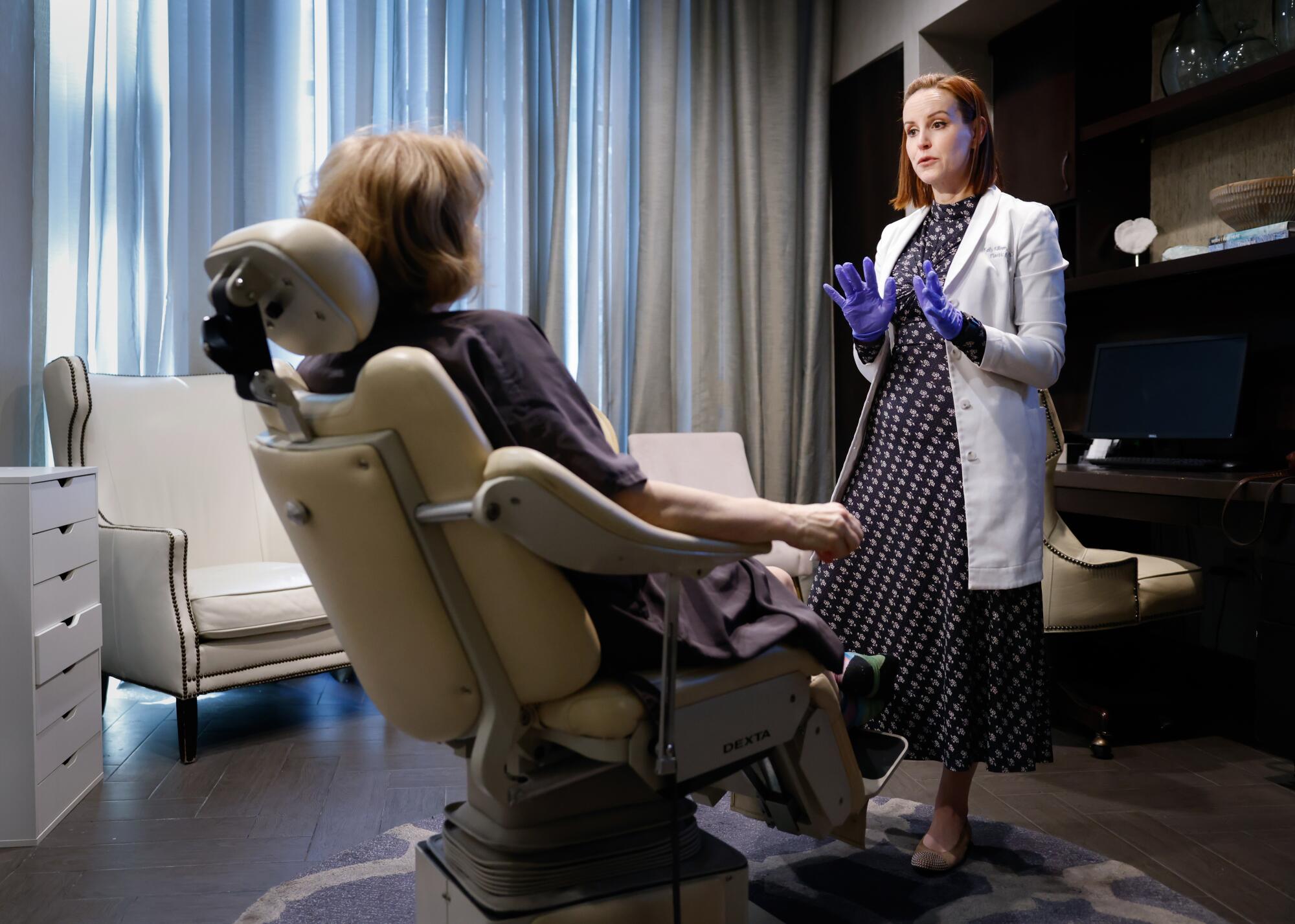
But Jennifer, who declined to provide her last name to protect her privacy, struggled for years to lose the weight, exercising and eating healthy to no avail and putting on a few more pounds during the pandemic. As a Type 2 diabetic with a high BMI, she was a prime candidate for Ozempic and began taking the drug last year.
In late January, 40 pounds lighter, she finally got her tummy tuck.
“I’m so glad I did it — I wish I’d done it sooner,” the 64-year-old piano teacher from Santa Monica said during a post-op checkup this month, her exam gown pulled open to reveal a nicely healing scar across her abdomen. After having low self-esteem about her body for so many years, Ozempic was “life-changing,” she said.
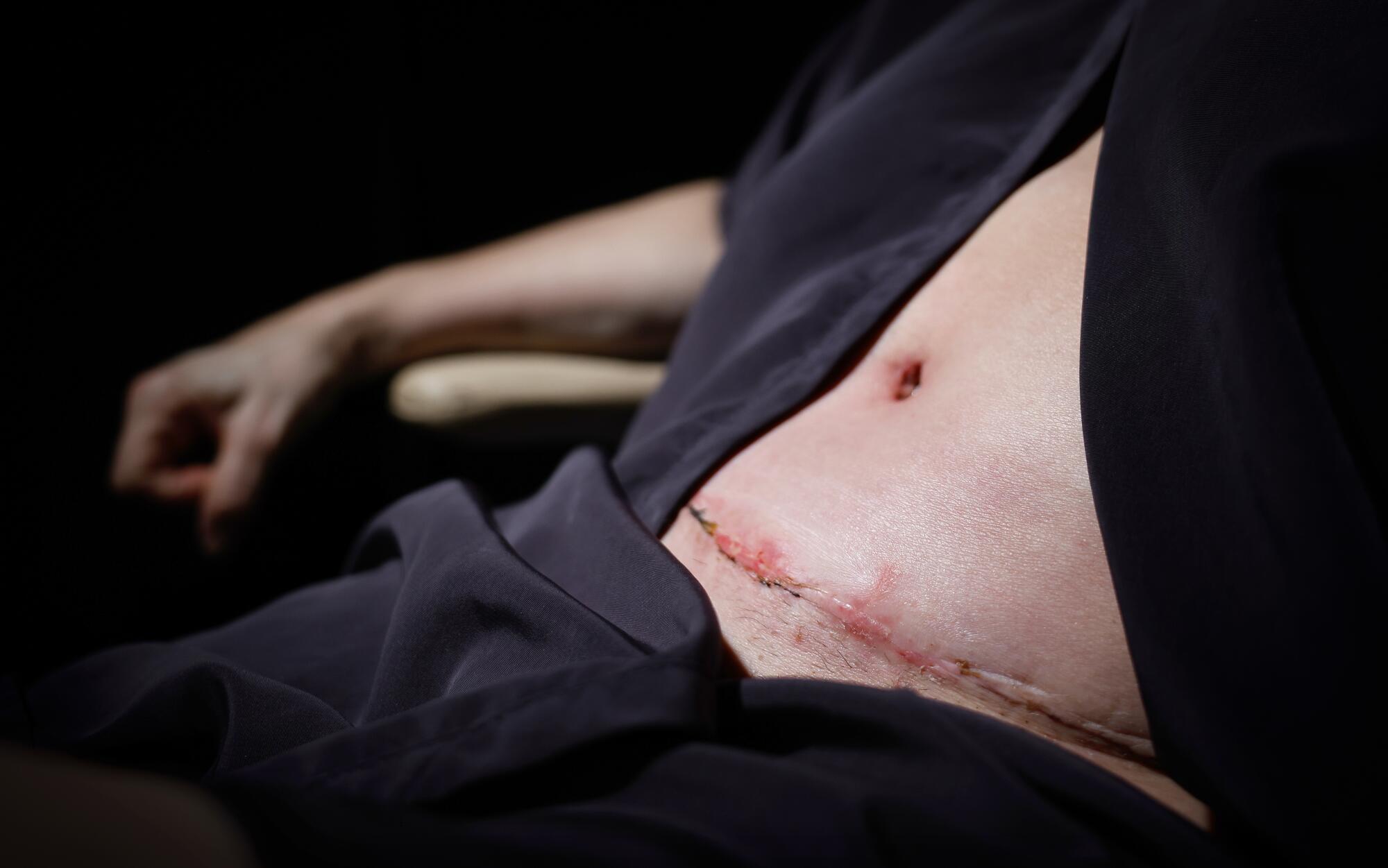
Patients were casually mentioning the drug so often in her practice that Dr. Melinda Haws, like many plastic surgeons around the country, added rapid-weight-loss medications to her intake questionnaire a year ago.
“We like patients to be at a healthy weight, and as close to the weight that they’re going to maintain, when they do surgery,” said Haws, president of the Garden Grove-based Aesthetic Society. “I hate to do a breast lift on someone who has lost 20 pounds but is on Ozempic and plans to lose another 30. Because for sure by the time she loses more weight, we’ll need to redo the surgery I just did.”
I can either be thin and have to fight this skin, or I can be heavier and have the volume. It’s like a double-edged sword.
— Jeniffer Brown, who got a breast lift and arm lift after losing 40 pounds on Ozempic
The new weight-loss drugs could also prove to be a boon for the so-called noninvasive side of the aesthetics industry. Such cosmetic procedures don’t require surgery and include Botox, lasers, injectable fillers and chemical peels.
During an earnings call this month for AbbVie, the parent of Botox maker Allergan, one analyst wondered how the latest generation of weight-management drugs could affect sales for the pharmaceutical company in the years ahead.
“It’s a potential headwind if patients only have so many dollars to spend on aesthetics and they reallocate their out-of-pocket spending away from dermal fillers and toxins towards obesity drugs,” analyst Tim Anderson of Wolfe Research said on the call. “Or it’s a tailwind if patients using obesity drugs get things like the so-called Ozempic face and they end up using more toxins and fillers.”
Carrie Strom, president of Global Allergan Aesthetics, said the company had so far not seen an effect but noted that there was “absolutely” an overlap between its customers and patients taking the weight-loss drugs, which could lead to a financial boost down the line.
“Any time people are getting more engaged in their appearance, that’s a positive thing for aesthetics,” she said. “We’ve learned that it does reinforce the long-term tailwind because the majority of people who engage in these medical weight-loss products are more interested in aesthetics afterwards than they were before.”

For Brown, the Ozempic patient who got the breast lift and arm lift, there’s more work to be done.
“Another thing I’ve noticed is my eyelids are really saggy,” she said. “When I put my eyeliner on, I can tell that my eyelids are definitely different than they were.”
Brown is now getting a quote for blepharoplasty, which removes excess skin from the eyelids, and would like to get the procedure done by the end of the year.
“I can either be thin and have to fight this skin, or I can be heavier and have the volume,” she said. “It’s like a double-edged sword: You can have one, but you have to take the other with it.”
More to Read
Sign up for This Evening's Big Stories
Catch up on the day with the 7 biggest L.A. Times stories in your inbox every weekday evening.
You may occasionally receive promotional content from the Los Angeles Times.

